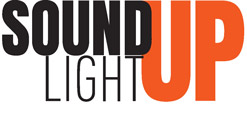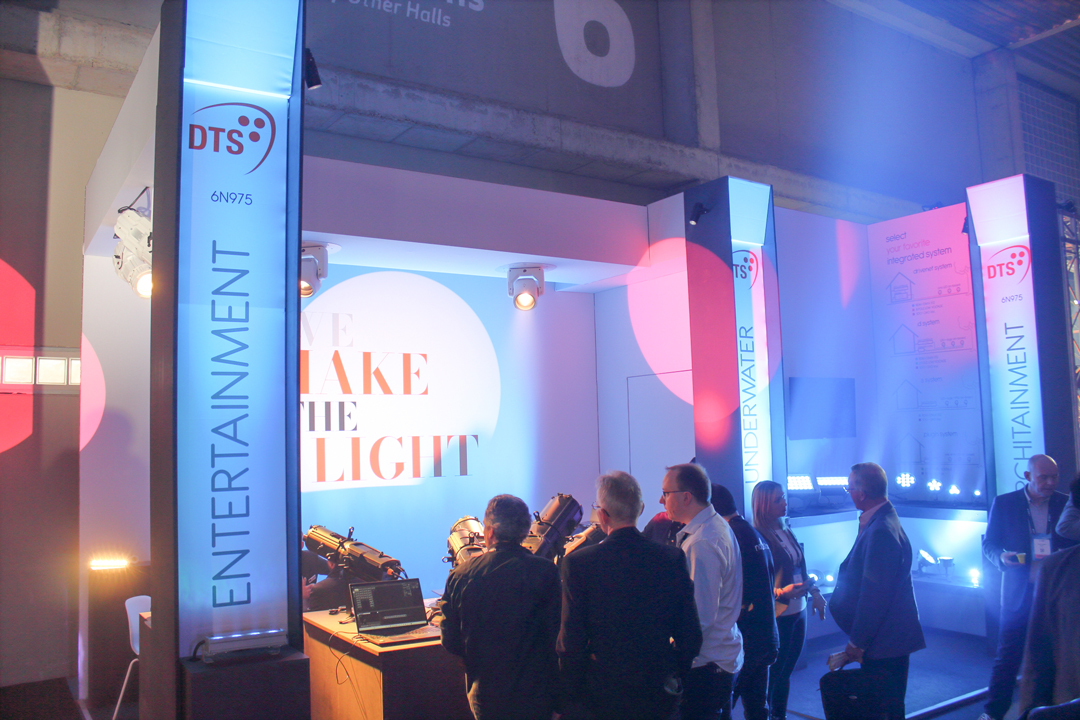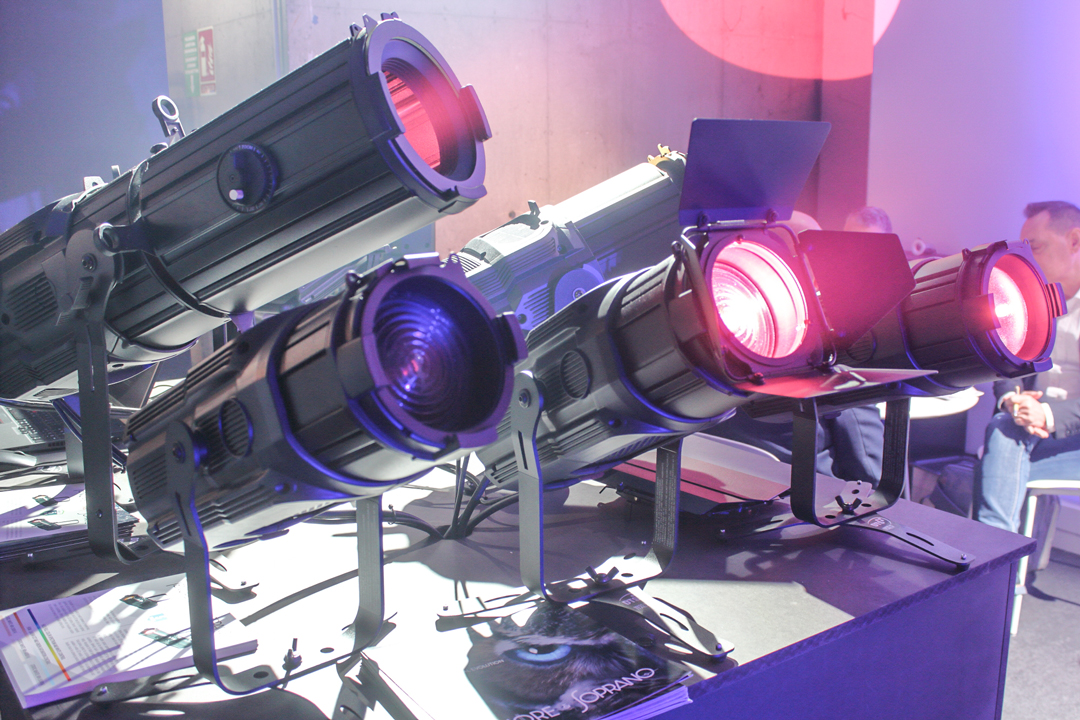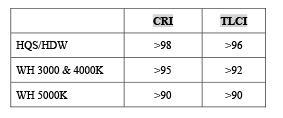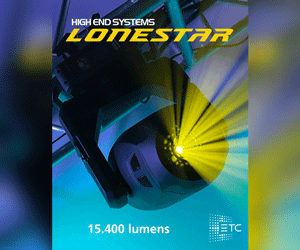Following up on the success of the Soprano & Tenore LED-source profile and PC/Fresnel fixtures, Italian manufacturer DTS is now offering versions in a very compact format, which maintain a very high level of performance.
Two years after the launch of the Tenore and Soprano 3 and 5 ranges, they’re unveiling the ‘1’ versions of these fixtures, which retain the DNA of the original series: high technical standards for outstanding performance. For both Tenore and Soprano, the following five new versions are now available:
– the HQS full-colour version (Red, Green, Blue, Amber, Cyan, Lime).
– the HDW variable white version (colour temperature variable from 1800 K to 10000 K).
– the WH tuned white versions (three models: 3000 K, 4000 K and 5000 K).
The Tenore 1 models feature interchangeable optics, so you can switch from a PC to a Fresnel and vice-versa. The manual zoom of the PC lens covers a range from 8° to 68° of beam aperture, while that of the Fresnel lens can go from 10° to 68°. Luminous flux varies from 3,800 lm to 6,100 lm, depending on the version. Tenore 1 weighs just 5.6 kg and is 41 cm long.
Moving on to Soprano (the profile version), its zoom is variable between 18° and 34°, while an optional lens provides a 25° to 46° zoom. The four framing shutters that shape the beam are fitted in a module that can be rotated through 90°. It features a D-type gobo module and an optional iris. The Soprano 1 delivers a flux of 3,000 to 3,850 lumens, depending on the version. Its more prominent optics mean that it weighs slightly more than its predecessor, at 8.2 kg for a length of 59 cm.
The colour rendering of these small LED sources of less than 100 W hasn’t been compromised, however, as the following values demonstrate:
To round off this brief overview of the performance of the Tenore and Soprano 1, both provide multiple cooling modes to suit different noise level requirements: 21 dBA in Ultra Silent mode (with a 10% power reduction) compared with 23 dBA in standard mode.
Several dimming curves are available, depending on the type of luminaire, including ‘Hi-Q’ (high linearity with no visible steps even at low values) and ‘Tungsten emulation’, with the inertia and colour temperature shift of the white modelled on that of a halogen lamp. The fixed tuned white versions use a more conventional PWM (pulse width modulation) dimmer.
For further information, visit the DTS Lighting website

